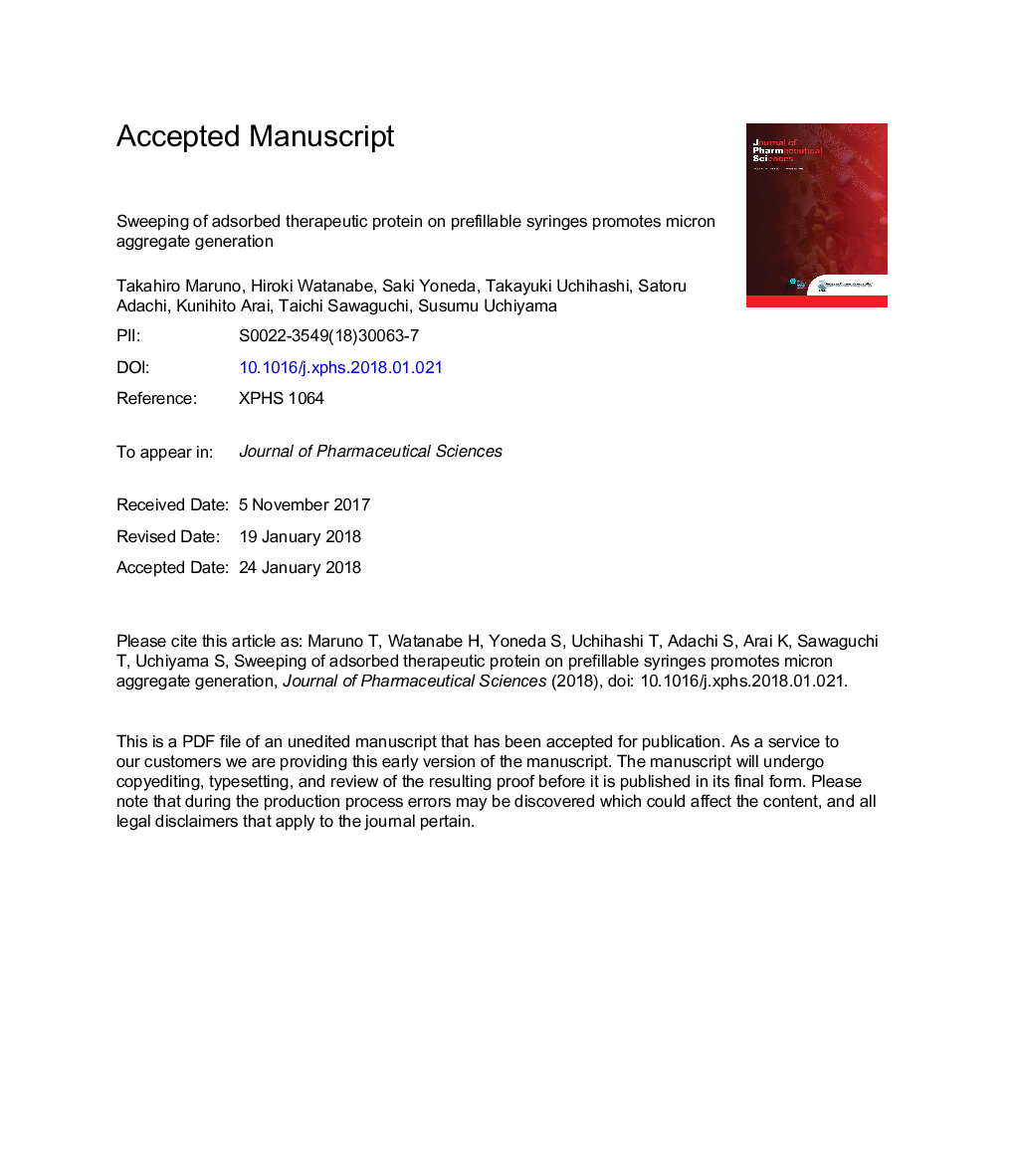| Article ID | Journal | Published Year | Pages | File Type |
|---|---|---|---|---|
| 8513234 | Journal of Pharmaceutical Sciences | 2018 | 52 Pages |
Abstract
This study evaluated how differences in the surface properties of prefillable syringe barrels and in-solution sampling methods affect micron aggregates and protein adsorption levels. Three syringe types (glass barrel with silicone oil coating [GLS/SO+], glass barrel without silicone oil coating [GLS/SOâ], and cyclo-olefin polymer [COP] barrel syringes) were tested with 3 therapeutic proteins (adalimumab, etanercept, and infliximab) using 2 sampling methods (aspiration or ejection). After quiescent incubation, solutions sampled by aspiration exhibited no significant change in micron aggregate concentration in any syringes, whereas those sampled by ejection exhibited increased micron aggregates in both GLS syringe types. Micron aggregate concentration in ejected solutions generally increased with increasing density of adsorbed proteins. Notably, COP syringes contained the lowest micron aggregate concentrations, which were independent of the sampling method. Correspondingly, the adsorbed protein density on COP syringes was the lowest at 1-2 mg/m2, which was much less compared with that on GLS syringes and was calculated to be equivalent to only 1-2 protein layers, as visually confirmed by high-speed atomic force microscopy. These data indicate that low-adsorption prefillable syringes should be used for therapeutic proteins because protein aggregate concentration in the ejected solution is elevated by increased protein adsorption to the syringe surface.
Keywords
Related Topics
Health Sciences
Pharmacology, Toxicology and Pharmaceutical Science
Drug Discovery
Authors
Takahiro Maruno, Hiroki Watanabe, Saki Yoneda, Takayuki Uchihashi, Satoru Adachi, Kunihito Arai, Taichi Sawaguchi, Susumu Uchiyama,
